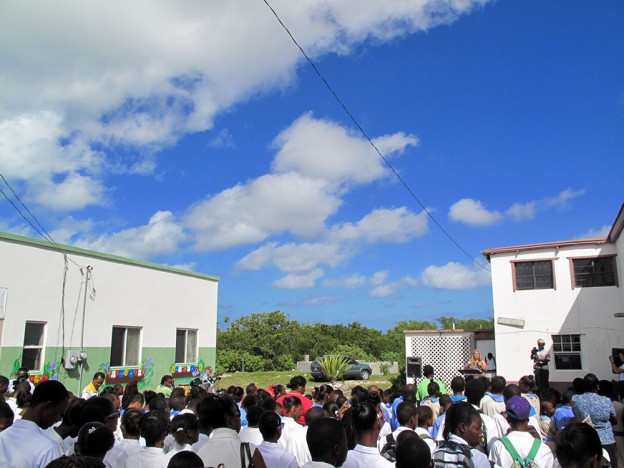On Friday I attended the Museum opening, a culmination of a long collaboration between the Barbudans, the politicians and the researchers at the Barbuda Archeological Research Center (BARC). The ceremonies started about 10am with a series of speeches by leading figures, including John Mussington, the principle of the high school here, and Dr. Sophia Perdikaris, the director of BARC. A group of children played steel pan renditions of Bob Marley and what I think was Twist and Shout (?). There was a delightful elasticity to their playing.
It is important to note that there are two museums. In one building there is an “adult” museum, with archeological finds, a human skeleton named “George” and historical photographs of life on the island. Across the way, there is a museum for children. Here you will find informative yet fun posters about the importance of mangroves, the dance of bees, a small boat for the children to play in and various other installations to generate excitement. Both rooms can hold about 18 people at most, so they were at capacity for much of the day as people checked it out for the first time.
I was struck by two things:
The audience was full of children. This is of course due to the fact that the schools create a field trip out of the event, but these children are the ones who will grow with the museum. The museums are seeds. They are institutionalized places where stories of the past are presented in a formalized way. They also give us the opportunity to orient our own lives to this narrative. It is the children that will grow up having this as a part of their lives. The principle is already setting up a program where they help manage it.
The difference between having a museum and not having a museum is huge. Can you imagine not having one in your home? No matter what the size, opening up that space in a formalized way within a culture is a tremendous intervention. There is now a place to display artifacts found on the island, not ship them off somewhere else. Barbuda now can be in control of its own narrative a bit more, having a place to perpetually ask “what does it mean to be from Barbuda?”
Of course this is all just a beginning. There are real challenges in how to manage and grow the museums. But it was a nice moment to observe, this transition from all the hard work of setting it up to letting it become part of the social fabric of Barbuda.
